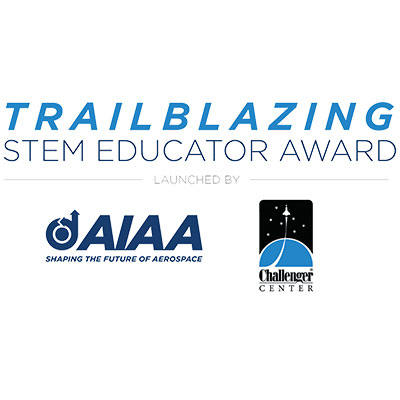The aeronautics industry is building on the advances made since the early 20th century taking us further, faster, safer, and cleaner. In the next 5–10 years, many new capabilities will be introduced, and the next generation will experience flight in ways we are just imagining. AIAA advances these opportunities for novel aircraft design, operations, and impact through its focus on the Aeronautics Domain.
Key Topics
 Advanced Air Mobility
Advanced Air MobilityAdvanced air mobility could grow into a $115 billion industry that gives all of us new transportation options. With clear operational guidelines, regulations, and standards for accommodating and incorporating autonomy, we see a thriving integrated urban and regional airspace in the next decade. The benefits of autonomy will enhance safety for everyone and enable capabilities we are only just imagining.
Learn More
 Carbon Emissions and Sustainability
Carbon Emissions and SustainabilityThe global community is focused on achieving net-zero greenhouse gas emissions from the aviation sector by 2050. The AIAA community plays an integral role in this effort that will make a substantial difference to benefit our planet.
 Certification
CertificationThe widespread use of UAVs and drones—both commercial and recreational—prompted the Federal Aviation Administration (FAA) to adapt its certification processes. Similarly, the FAA must facilitate safe use of AAM systems for passenger and cargo transport. As the FAA refreshes its certification strategy, we expect to see clear specifications, regulations, and standards emerge that will strike an appropriate balance between safety and innovation.
Space launches are close to a daily occurrence and launch sites are infringing on urban environments and large metropolitan areas. The integration of commercial air traffic, AAM, and space launch traffic must receive government attention to help drive global regulatory and certification strategies that ensure safety and continued smooth sustainable economic growth for all stakeholders.
 High-Speed Flight
High-Speed FlightHigh-speed “transportation” – both military and civilian – is fast becoming a reality. Integrating hypersonic and supersonic flight into the national and global airspace will require attention to operational efficiency, safety through certification, and environmental and societal impacts including noise and emissions. AIAA will address questions around:
- Is sustainable civil high-speed endo-atmospheric flight achievable?
- What role does the government have in promoting hypersonic and/or supersonic flight?
- What technologies are needed to develop and mature efficient and low environmental impact hypersonic and supersonic flight?
AIAA Related Content
EVENTS
AIAA Members: make sure you are signed in to the site with your member credentials to be able to register.
This event is offered exclusively to AIAA members. Want to learn more about the benefits of AIAA membership?

HyTASP Webinar Series: Detonation-Based Combustion for High-Speed Propulsion Systems | 18 October 2024, 12:00 PM–1:00 PM EDT
Detonation-Based Combustion for High-Speed Propulsion Systems
Detonation-based engines have recently gained substantial interest as an alternative to traditional deflagration-based propulsion systems, with the theoretical potential to achieve overall engine performance gains in a more compact volume. Specifically, rotating detonation rocket engines (RDRE’s) can exhibit an increase in chamber pressure, temperature and exhaust gas velocity for a substantially lower injection pressure through a near constant-volume combustion process, compared to constant-pressure devices. If these benefits are successfully realized, this can result in overall engine performance gains (i.e., increased thrust and specific impulse) up to ~10% or a 5X reduction in required injection feed pressures.
During RDRE operation, one or more detonation wave(s) travel around the annulus supersonically by continuously consuming the incoming reactants while producing combustion products that exit the open end of the engine. Experimental work performed at the University of Alabama in Huntsville (UAH) in collaboration with the Air Force Research Laboratory (AFRL) is focused on characterizing engine behavior of a small-scale RDRE for versatile in-space propulsion
Specifically, this work aims to measure engine performance (i.e., thrust and specific impulse), determine the operability range for various flow conditions, and characterize the corresponding operating detonation modes for a 100 N, 25 mm outer diameter detonation-based thruster. Current emphasis is placed on investigating various chamber geometries including both annular and cylindrical configurations, as well as different fuels (i.e., methane, hydrogen); this aims to demonstrate engine behavior sensitives towards the development of engine scaling approaches for determination of the minimum engine size supporting robust detonation. Additionally, to greater understand how to create and sustain high-strength detonations in compact RDREs, fundamental studies into characteristic timescales and coupling mechanisms for detonation-based engine processes including chemical kinetics, injection, flow and acoustic are required. Using various first principle analyses, these timescales are quantified for a variety of fuels, along with different non-idealities being present (e.g., pre-burning). In total, results from these studies advance the understanding of RDREs for future designs that may lead to performance gains above those achievable from traditional designs.
Speaker

University of Alabama in Huntsville
Dr. John Bennewitz is an assistant professor in the Mechanical & Aerospace Engineering Department at the University of Alabama in Huntsville. He is the principal investigator of the Advanced Propulsion, Energy and Combustion Science Laboratory (APECSLab), managing a group of students to pursue research into advanced propulsion systems for liquid and solid propellants and power generation. Prior to joining UAH, he was the principal investigator for the rotating detonation rocket engine (RDRE) program at the Air Force Research Laboratory (AFRL). During his five years at AFRL, he performed over 2000 successful hot-fire tests of developmental RDRE hardware that demonstrated robust detonation and operability for a wide range of injection designs. He received his B.S. in Mechanical Engineering from the University of Pittsburgh in 2008, before completing his M.S. in Aerospace Engineering from Georgia Institute of Technology in 2010 and his Ph.D. in Mechanical Engineering from the University of Alabama in Huntsville in 2015. Upon graduation, he worked as a postdoctoral research scholar at UCLA's Energy and Propulsion Research Laboratory studying acoustically-coupled fuel droplet combustion. His present research focuses on investigating fundamental detonation physics and engine scaling mythologies of small-scale detonation-based engines for in-space applications.
COURSES
-
Advanced Hydrogen Aerospace Technologies and Design – Online Short Course (Starts 8 October 2024)
8 October - 7 November 2024
This new joint course from AIAA and HYSKY Society, the latest and greatest in hydrogen aerospace technology is presented in the context of Fixed-Wing and eVTOL aircraft/vehicle design.
Open for registration. Register Now
-
Guidelines for the Development of Civil Aircraft & Systems
-
Composite Structures: Process Analysis, Progressive Damage, Failure Analysis, and Advanced Software
-
A Practical Approach to Gas Turbine Engine Performance & Design using GasTurb14
-
The Anatomy of Autonomy
-
Test Foundations for Flight Test – Online Short Course (Starts 18 Feb 2025)
18 February - 13 March 2025
This course introduces the components involved with planning, executing, analyzing, and reporting on a flight test program.
Open for registration. Register Now
-
Design Evolution of Aircraft Structures
-
Guidance and Control of Hypersonic Vehicles
NEWS
-
 Challenger Center and AIAA Open Nominations for 2025 Trailblazing STEM Educator Award
Challenger Center and AIAA Open Nominations for 2025 Trailblazing STEM Educator Award
24 September 2024
Challenger Center and the American Institute of Aeronautics and Astronautics (AIAA) announced they are accepting nominations for the 2025 Trailblazing Science, Technology, Engineering, and Math (STEM) Educator Award. The annual award celebrates K-12... -
 AIAA Announces its Class of 2025 Associate Fellows
AIAA Announces its Class of 2025 Associate Fellows
23 September 2024
AIAA is pleased to announce its newly elected Class of 2025 Associate Fellows. AIAA will formally honor and induct the class at the AIAA Associate Fellows Induction Ceremony and Dinner, Wednesday, 8 January 2025, at the Hyatt Regency Orlando... -
 AIAA and HYSKY Society Announce New Advanced Hydrogen Aviation Short Course
AIAA and HYSKY Society Announce New Advanced Hydrogen Aviation Short Course
19 September 2024
AIAA is pleased to announce a new continuing education course on hydrogen aviation developed in collaboration with HYSKY Society, an association committed to decarbonizing aviation with hydrogen. -
 AIAA Statement on SpaceX Polaris Dawn Mission
AIAA Statement on SpaceX Polaris Dawn Mission
13 September 2024
AIAA CEO Dan Dumbacher made the following statement: “On behalf of the 30,000 professional and student members of AIAA, we congratulate the SpaceX team and the Polaris Dawn crew on their accomplishments. -
 AIAA Announces 2024 Undergraduate Scholarship and Graduate Award Winners
AIAA Announces 2024 Undergraduate Scholarship and Graduate Award Winners
5 September 2024
The AIAA Foundation has announced the 26 winners of its 2024 undergraduate scholarships and graduate awards. -
 AIAA Names Clay Mowry as Chief Executive Officer
AIAA Names Clay Mowry as Chief Executive Officer
3 September 2024
AIAA announced today that its Board of Trustees has selected Clay Mowry as the Institute’s new chief executive officer (CEO). Mowry is a globally recognized space industry executive with experience across the international aerospace community. He will join the Institute effective 1 October 2024. -
 AIAA Statement on Blue Origin’s Successful NS-26 Mission
AIAA Statement on Blue Origin’s Successful NS-26 Mission
29 August 2024
AIAA CEO Dan Dumbacher made the following statement: “On behalf of the 30,000 professional and student members of AIAA, we congratulate Blue Origin on its successful NS-26 mission. -
 Dan Dumbacher Recognized with Allyship Award
Dan Dumbacher Recognized with Allyship Award
21 August 2024
AIAA CEO Dan Dumbacher is being recognized by Women in Aerospace with their 2024 Allyship Award. This honor is presented to an individual ‘who actively promotes and aspires to advance a culture...


